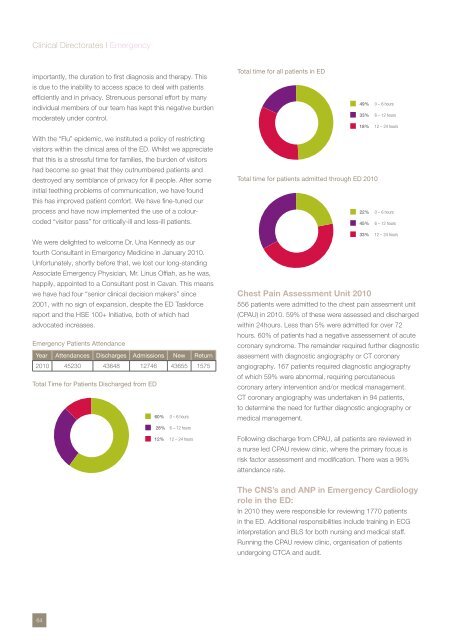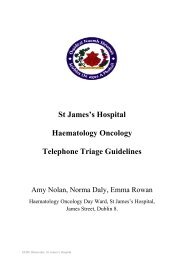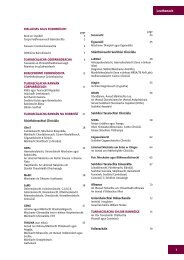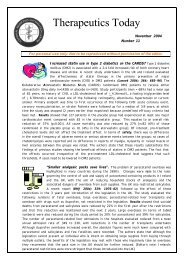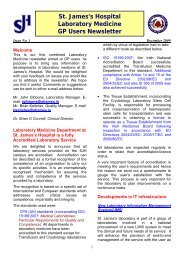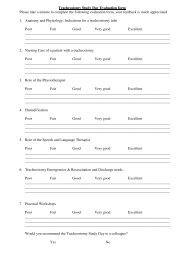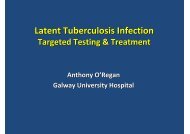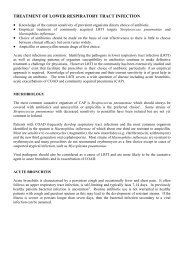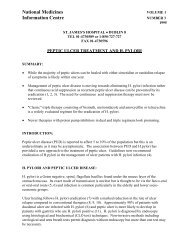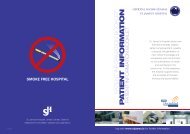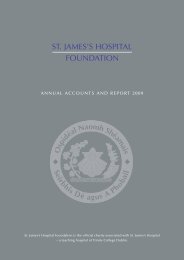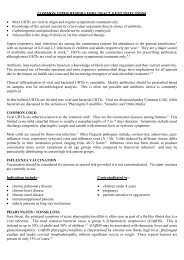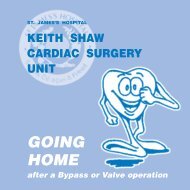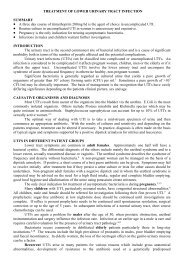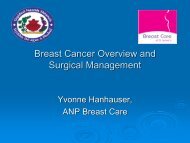Annual Report 2010 - St. James's Hospital
Annual Report 2010 - St. James's Hospital
Annual Report 2010 - St. James's Hospital
You also want an ePaper? Increase the reach of your titles
YUMPU automatically turns print PDFs into web optimized ePapers that Google loves.
Clinical Directorates I Emergency<br />
importantly, the duration to fi rst diagnosis and therapy. This<br />
is due to the inability to access space to deal with patients<br />
effi ciently and in privacy. <strong>St</strong>renuous personal effort by many<br />
individual members of our team has kept this negative burden<br />
moderately under control.<br />
Total time for all patients in ED<br />
49% 0 – 6 hours<br />
33% 6 – 12 hours<br />
18% 12 – 24 hours<br />
With the “Flu” epidemic, we instituted a policy of restricting<br />
visitors within the clinical area of the ED. Whilst we appreciate<br />
that this is a stressful time for families, the burden of visitors<br />
had become so great that they outnumbered patients and<br />
destroyed any semblance of privacy for ill people. After some<br />
initial teething problems of communication, we have found<br />
this has improved patient comfort. We have fi ne-tuned our<br />
process and have now implemented the use of a colourcoded<br />
“visitor pass” for critically-ill and less-ill patients.<br />
We were delighted to welcome Dr. Una Kennedy as our<br />
fourth Consultant in Emergency Medicine in January <strong>2010</strong>.<br />
Unfortunately, shortly before that, we lost our long-standing<br />
Associate Emergency Physician, Mr. Linus Offi ah, as he was,<br />
happily, appointed to a Consultant post in Cavan. This means<br />
we have had four “senior clinical decision makers” since<br />
2001, with no sign of expansion, despite the ED Taskforce<br />
report and the HSE 100+ Initiative, both of which had<br />
advocated increases.<br />
Emergency Patients Attendance<br />
Year Attendances Discharges Admissions New Return<br />
<strong>2010</strong> 45230 43648 12746 43655 1575<br />
Total Time for Patients Discharged from ED<br />
60% 0 – 6 hours<br />
28% 6 – 12 hours<br />
12% 12 – 24 hours<br />
Total time for patients admitted through ED <strong>2010</strong><br />
22% 0 – 6 hours<br />
45% 6 – 12 hours<br />
33% 12 – 24 hours<br />
Chest Pain Assessment Unit <strong>2010</strong><br />
556 patients were admitted to the chest pain assesment unit<br />
(CPAU) in <strong>2010</strong>. 59% of these were assessed and discharged<br />
within 24hours. Less than 5% were admitted for over 72<br />
hours. 60% of patients had a negative assessement of acute<br />
coronary syndrome. The remainder required further diagnostic<br />
assesment with diagnostic angiography or CT coronary<br />
angiography. 167 patients required diagnostic angiography<br />
of which 59% were abnormal, requiring percutaneous<br />
coronary artery intervention and/or medical management.<br />
CT coronary angiography was undertaken in 94 patients,<br />
to determine the need for further diagnostic angiography or<br />
medical management.<br />
Following discharge from CPAU, all patients are reviewed in<br />
a nurse led CPAU review clinic, where the primary focus is<br />
risk factor assessment and modifi cation. There was a 96%<br />
attendance rate.<br />
The CNS’s and ANP in Emergency Cardiology<br />
role in the ED:<br />
In <strong>2010</strong> they were responsible for reviewing 1770 patients<br />
in the ED. Additional responsibilities include training in ECG<br />
interpretation and BLS for both nursing and medical staff.<br />
Running the CPAU review clinic, organisation of patients<br />
undergoing CTCA and audit.<br />
64


